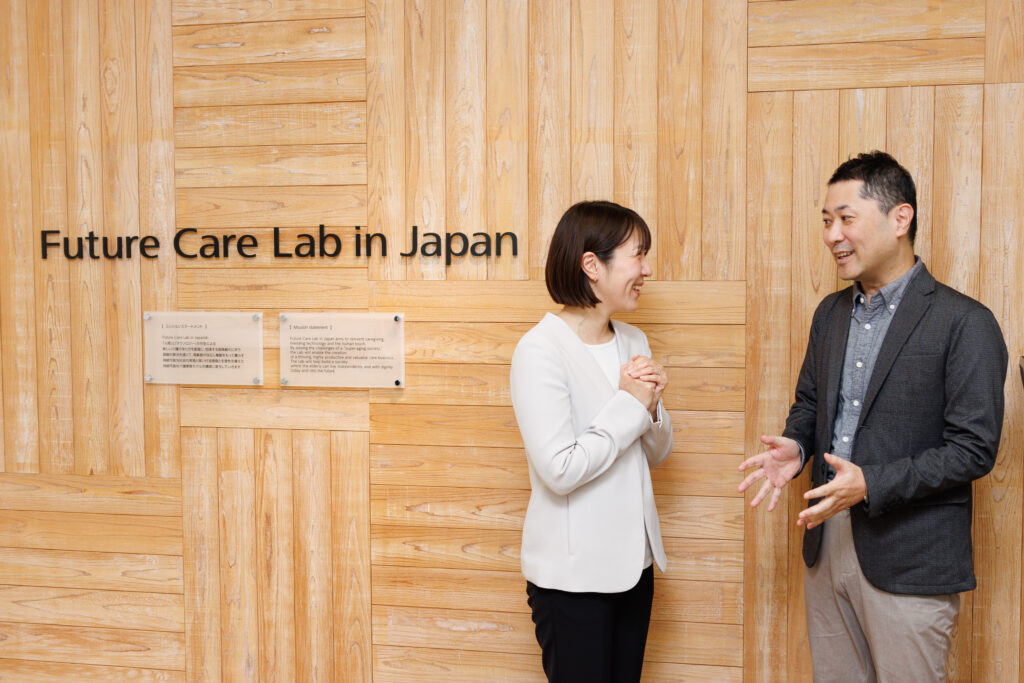Focusing on the “present” of all people involved in caregiving, we will create a better “future” of caregiving. ー Future Care Lab in Japan × BRV
Future Care Lab in Japan
The living lab* “Future Care Lab in Japan” was opened five years ago by Sompo Holdings, Inc. and Sompo Care Inc. as a research facility dedicated to testing cutting-edge Japanese and international technologies. In accordance with the mission “Reinvent Caregiving, Blending Technology with a Human touch,” the lab continues to conduct research in collaboration with a variety of development companies to realize sustainable nursing care services.
This time, we interviewed Saori Haga, Deputy Director of Future Care Lab in Japan, and Tomokazu Iida, President and Representative Director, CEO of BRIGHT VIE Co., Ltd., a company that develops ICT services for nursing care and conducts cooperative research at Future Care Lab in Japan, about the current challenges facing nursing care and its future agenda.
* A portmanteau of “living” and “lab.” It refers to a place in which citizens, businesses, and governments work together to solve social issues and create new value.
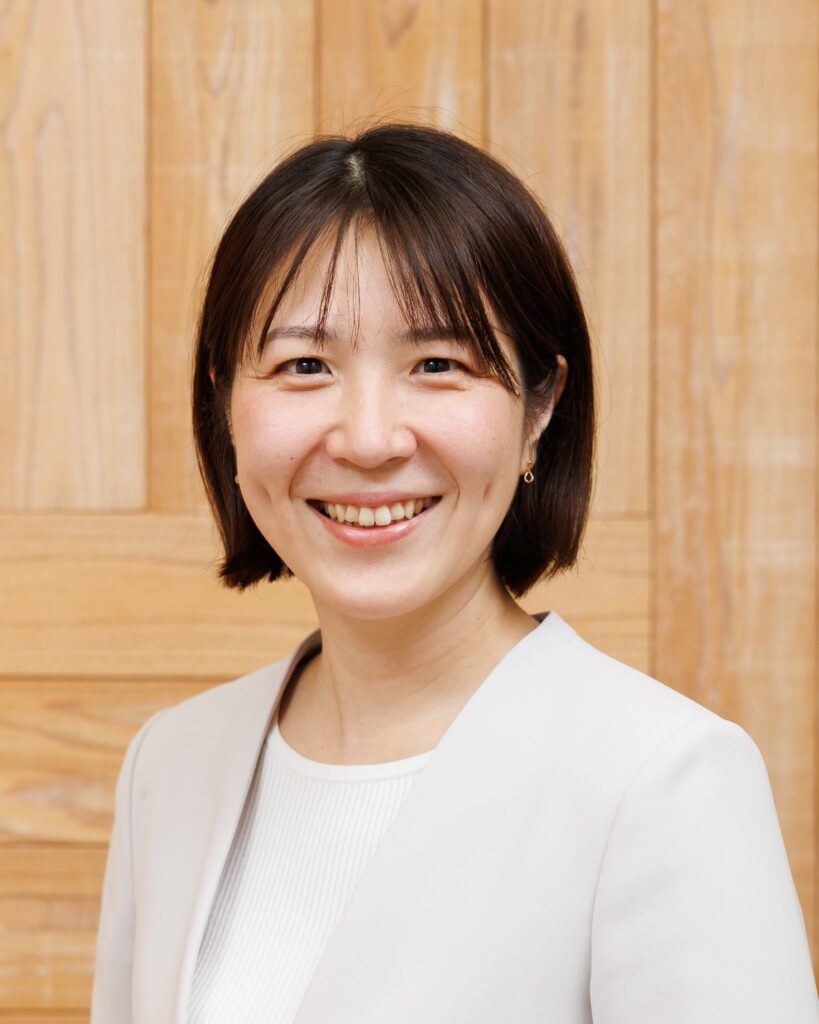
Saori Haga,
Deputy Director and Chief Researcher, Future Care Lab in Japan
Graduated from the Department of Social Welfare, Faculty of Sociology, Toyo University in 2009. Having experienced caring for her grandmother during her childhood, Ms. Haga decided to major in social welfare at university. She was then exposed to the field through volunteer and part-time work related to care and welfare. After graduating from university, she worked on developing barrier-free and universal design products, as well as planning nursing care robots. She joined Sompo Care Inc. in 2019 and came to participate in the Future Care Lab in Japan.

Tomokazu Iida,
President and Representative Director, CEO of BRIGHT VIE Co., Ltd.
Graduated from the College of Policy Science, Ritsumeikan University, in 1999. After working for Fujitsu as an engineer for nine years, he struck out on his own as a freelance engineer. While building a labor and communication system for nursing care facilities, he came to feel like supporting the field of nursing care through ICT, leading him to engage in ICT for nursing care as his life’s work. He has developed “Care Data Connect” and “Cares Connect.” In February 2014, he established BRIGHT VIE Co., Ltd., and joined the TRYT Group in June 2023.
The role of the living lab “Future Care Lab in Japan”—aiming to become a place that connects those who receive care, those who provide care, and those who create care
—Please tell us about the first encounter between Future Care Lab in Japan and BRIGHT VIE.
Iida: It all started about five years ago when the then technical director of Future Care Lab in Japan (hereinafter, “FCL”) contacted me to learn more about our Care Data Connect (hereinafter, “CDC”), a system that seamlessly integrates data from nursing care ICT devices into a nursing care record system in a one-stop manner. At that time, BRIGHT VIE was a small company with only three people, including me as the CEO, so I was very happy that the technical director sympathized with our concept, saying, “CDC is exactly the product we thought we needed to develop in-house from now on.” I remember making frequent visits to FCL since then with much determination and energy.
Haga: At that time, I had been involved in developing things like toilets, baths, and robots. So, I was amazed by the sensor platform when I was first shown it. I was excited by the endless possibilities of the platform, and became fascinated by the nursing care ICT developed by Mr. Iida and the view of the world enabled by “connecting” through sensors.
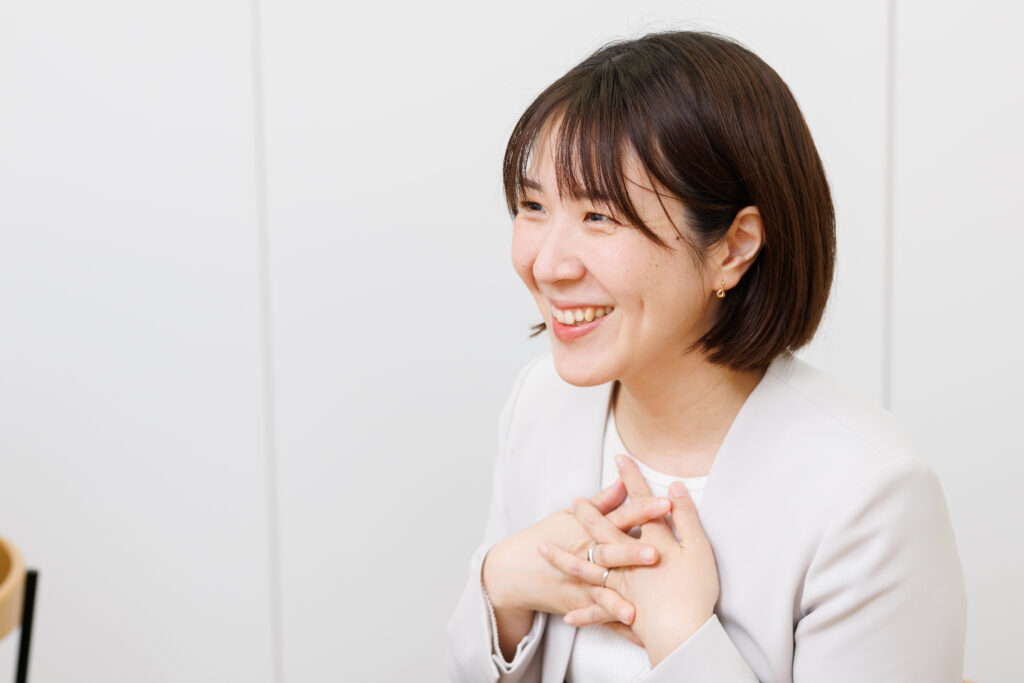
—About five years have passed since the first interaction between FCL and BRIGHT VIE. What are the values that FCL has always believed in?
Haga: At FCL, we aim to create technology that can be implemented in the field. To this end, our number one priority has been to become a place of co-creation that connects caregivers, care recipients, and technology creators, and that encourages collaborative technology creation. In the process, we have brainstormed ideas for the functions and concepts needed to provide better nursing care services and foster a comfortable working environment in the nursing care field. We then have provided empirical evaluation and development support for each idea.
However, this was not something we could have achieved through our own efforts alone. We believe that it is precisely because we have had contact with over 200 development companies and exchanged opinions with over 100 care service providers each year that we are now able to engage in product development that takes into account the needs of the nursing care field. Mainly at a facility operated by Sompo Care Inc., we act as an intermediary between the development company and the field in incorporating feedback from those in the field into the technology. After repeated trial and error, the technology is finally released to the public and used in hundreds of nursing care facilities, which creates a continuous development cycle. Although we are still only halfway there, I feel that FCL is getting closer to the goal it has had since it was founded, which is to “become a hub that connects various people involved in nursing care” while going through a PDCA cycle in planning, development, implementation, feedback, and improvement.
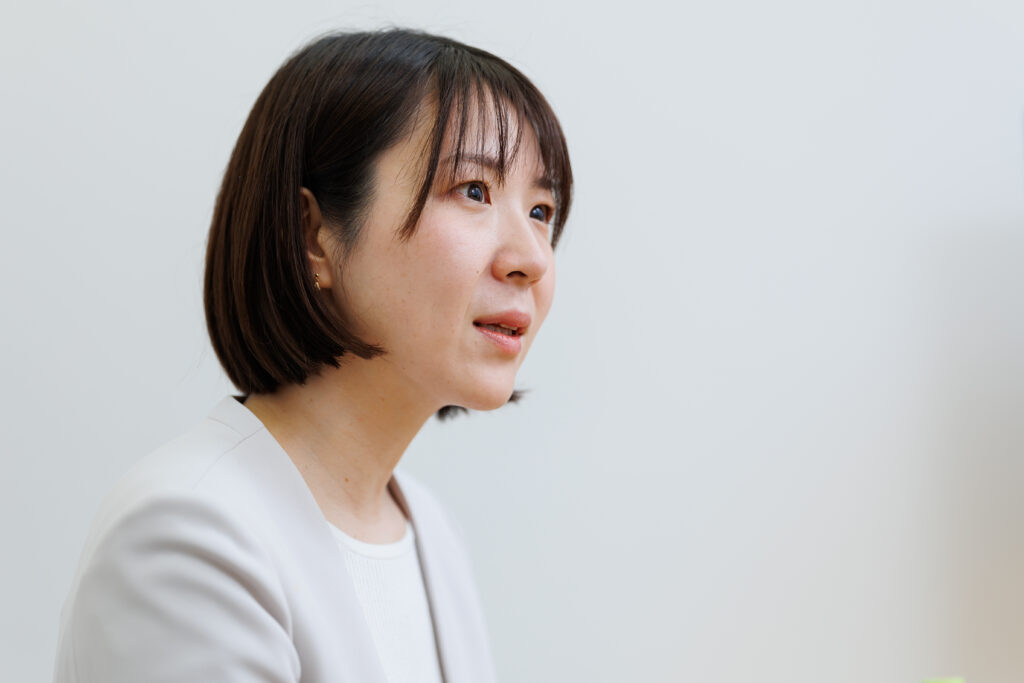
—Having its own facilities, which enables the incorporation of real feedback from the field into its products, can be a big advantage. CDC is no exception. I understand that you have been continuing to improve the system based on feedback from the field. As the two of you have been involved in product development for a long time, how do you accept the real opinions of users?
Haga: When we proposed CDC to the caregivers in the field, the reaction was beyond our imagination. We were excited, thinking that visualized data in graphs, such as daily changes in body temperature, diet, and excretion status of care facility residents, would make caregiving easier and that caregivers would be pleased with how easy it was to use the system. However, after the caregivers stared intently at the screen trying to decipher the data on sleep, excretion, diet, etc., they gave us opinions such as “I don’t know how to use the information,” and “I don’t think I have enough time to look at the screen.” If we were to release a product to the field without having been able to gather negative feedback during the prototype stage, the product would end up being difficult for caregivers to use. Therefore, we have always valued a process that collects such honest feedback and use it to make improvements in the next development phase.
Using technology in the nursing care field has benefits such as simplifying work. Nevertheless, when technology is first introduced in the workplace, caregivers need to learn about the purpose and methods of changing their caregiving work from that they have been providing. I always feel that, as a developer, we need to understand this issue and carefully consider when, where, and how caregivers will use the product in the field.
Iida: Honest opinions from people working in the field are something that we can’t buy, and are extremely valuable to us. When a company developing a product visits a care facility to hear feedback for an evaluation of a prototype being actually used in the workplace, it is rare to receive concrete feedback or honest opinions, including negative ones. This can prevent in-depth communication that could lead to subsequent improvements. However, by participating in the FCL project and having CDC tested at a facility operated by Sompo Care Inc., we were given many opportunities to hear the honest opinions of people on the ground, including one saying that it does not satisfy their needs. I think that CDC would not be what it is today if we hadn’t been able to hear such harsh opinions and comments. I’m grateful for this important process that has led to many discoveries and realizations.
Just as different opinions arise depending on the type of facility and the people working there, there is no one right answer when it comes to product development. Through the testing, we were able to realize that those in the field and developers do not necessarily view issues from the same perspective, and that the issues and solutions in the field vary greatly from facility to facility. This also meant a lot to us. When a brand new function is developed for the first time in the world, those of us who develop ICT equipment tend to be too excited about making hypotheses and expanding our imagination on what can be done using the new function. This can leave the actual needs of the field behind. I was reminded once again of the importance of listening to the real voices of people working in the field in developing what is truly needed.
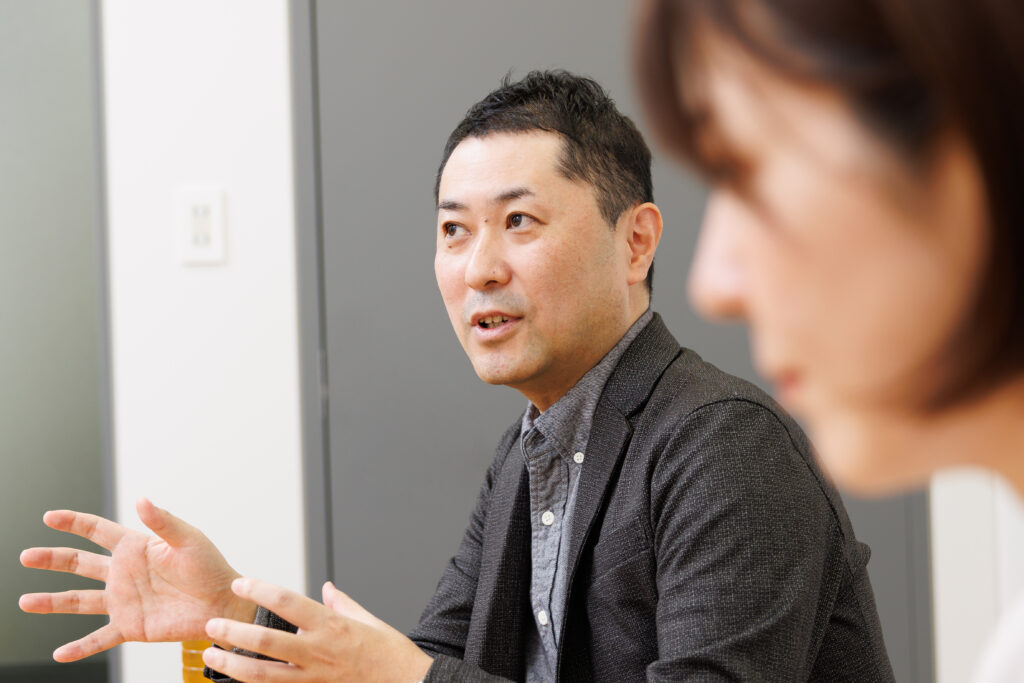
—Information technology is still in the penetration phase in the nursing care field. What kind of thinking must development companies have in order to further spread this technology?
Iida: The use of ICT is being promoted in the nursing care field, but I don’t think that simply introducing technology is enough. The aim of utilizing technology is to create a workplace where caregivers can work comfortably, to improve the quality of care, and to create a more comfortable space for users, not to merely pursue or evolve technology. I believe that developers, including us, must never forget this fact.
Haga: We have defined the FCL’s mission as “Reinvent Caregiving, Blending Technology with a Human touch.” As Mr. Iida says, technology is just one means. I feel that the most important thing is to imagine the situation in which the product will be used and consider how to design the system, including the mechanism, by taking into account the surrounding environment. If the nursing care field had remained analog without technology being introduced, it might have been enough to make various decisions and provide care based only on visible information. However, as shown in the case of the CDC review, as the amount of information available increases with the intervention of technology, the amount of information to be processed and the basis for decision-making also increase, which can place a burden on the work process. I think developers need to take this into account, think about what information is truly needed to provide better care, and give thought to how to incorporate necessary information into the systems in place at nursing care facilities.

A place to think about the current nursing care based on future nursing care models
—What was the idea behind the exhibition at FCL, “Questioning Nursing Care from a 2030 Perspective”? What reactions have you received?
Haga: We designed this exhibition in the hope of creating a place where people working in the nursing care field, including facility executives, could bring potential and actual issues to the table and exchange opinions for the future of nursing care. No one wants their ideas to be rejected by others and to be told, “That’s wrong.” We are not saying that the care currently provided is missing the point or wrong, but rather, we want to exchange opinions with everyone involved in the nursing care industry on what needs to be changed and what needs to remain unchanged in the current nursing care field in order to realize the exhibited future models.
One of the four exhibition themes that attracted the most attention was “Nursing care records without human recording” which was developed in collaboration with BRIGHT VIE. In this exhibit, we propose a new form of nursing care record, something that is rarely given attention in everyday care. We conducted a survey of FCL visitors, asking whether they wanted to continue recording with their current care records. In fact, about 90% of the survey participants answered, “don’t want to continue” and about 75% said that there are too many items to fill in. The results were the same even in nursing care settings where nursing care records have already been systematized. In other words, it is clear that we must question the practicality of the current nursing care records. In the future nursing care field, we must not allow caregivers to accept inconvenience as an unavoidable aspect of daily work. Rather, we must help them acquire and maintain the ability to question and communicate the gap between their ideals and reality, and ensure an environment for them to do so. To this end, I would be happy if FCL could play a role in stimulating dialogue aimed at solving issues in the nursing care industry.
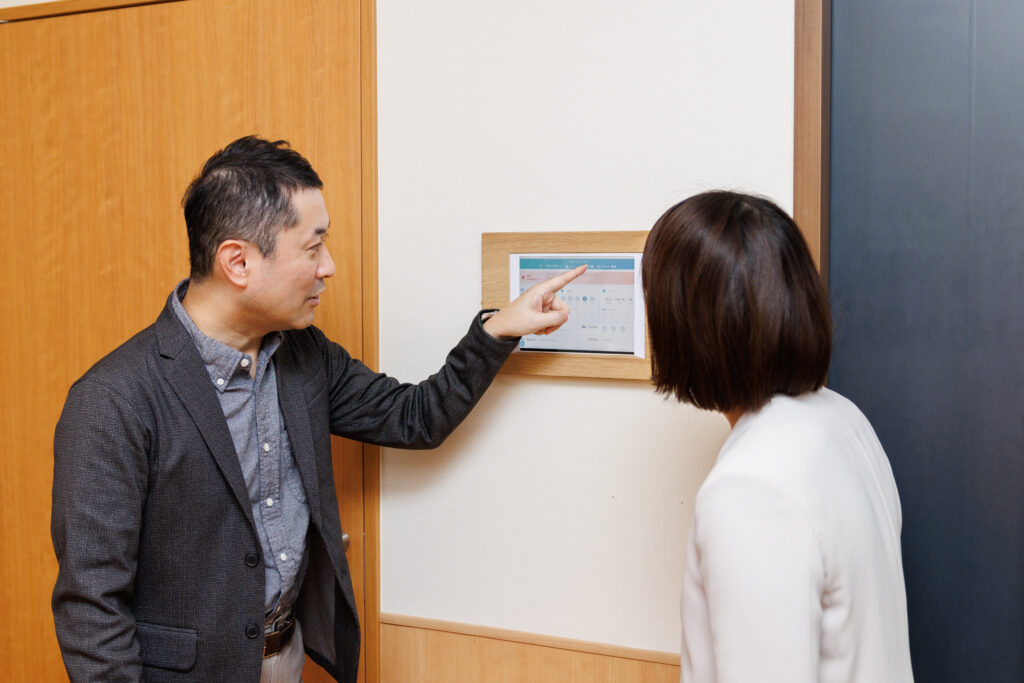
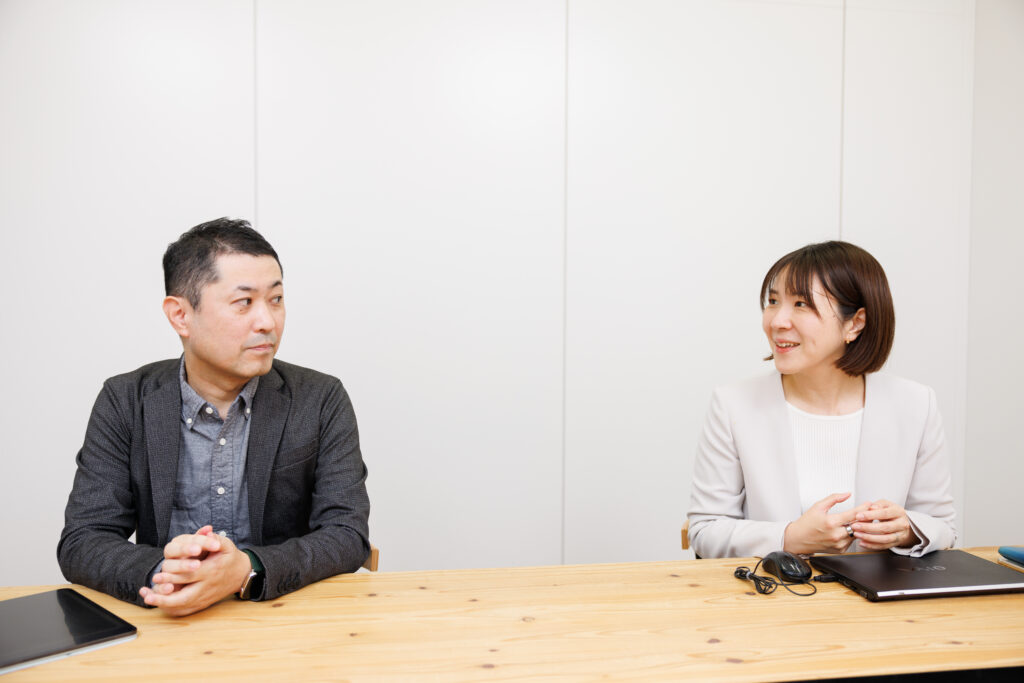
—Finally, please tell us about the “nursing care in the future” that you envision.
Haga: We believe that technology is one way of supporting us in living and working in our own way. We must ensure that the users can use nursing care services to continue to live as they wish as long as possible while the dignity of individuals is fully respected. Moreover, we need to establish a sustainable nursing care system, including the workforce. In 2023 and 2024, I had opportunities of business trip to Denmark, a welfare-advanced country. During my visits, I learned that leaders of caregivers working in the country understand their national philosophy and policy regarding elderly care. They then provide care based on their judgment in accordance with the concept shared among everyone in their workplace. There are also systems, structures, and environments designed to enable caregivers to continue working for a long time with good health. Seeing the difference in national systems and in the ways to treat and implement technology between Denmark and Japan, there were times when I wanted to turn a blind eye to the challenges facing Japan’s nursing care industry. At the same time, though, I thought that because Japan still needs to tackle many challenges, we would have many opportunities to help solve them. Going forward, I would like to continue coping with the challenges facing this country in order to make even a little difference in the future of nursing care.
Iida: I hope that the nursing care industry will become a more supportive environment for care workers. I think that the generation becoming elderly in the near future well understands caregiving duties and the difficulties involved because of their experiences, such as providing or witnessing nursing care from their childhood and providing care themselves while continuing to work. That is why I’m hopeful that 30 years from now, when this generation will be the ones receiving care, a culture of appreciation for caregivers will have taken root. If both those providing and receiving care can communicate respectfully, I’m sure that will bring a breath of new air into the nursing care industry and its surrounding environment. I would like to help develop such a positive communication climate from the ICT perspective.
Saying that nursing care was his life’s work, Mr. Iida commented that he wanted to give back to the people who had helped him in the nursing care industry. Meanwhile, Ms. Haga said she would eventually like to work in the nursing care field again when anyone needing technology can use it anytime. Both participated in our interview full of energy and determination. They focus on how to improve the future of caregiving in this country, rather than on the negative aspects of caregiving, such as difficulties and hardships. They wish to make caregiving an experience filled with warmth and will never cease their efforts.
